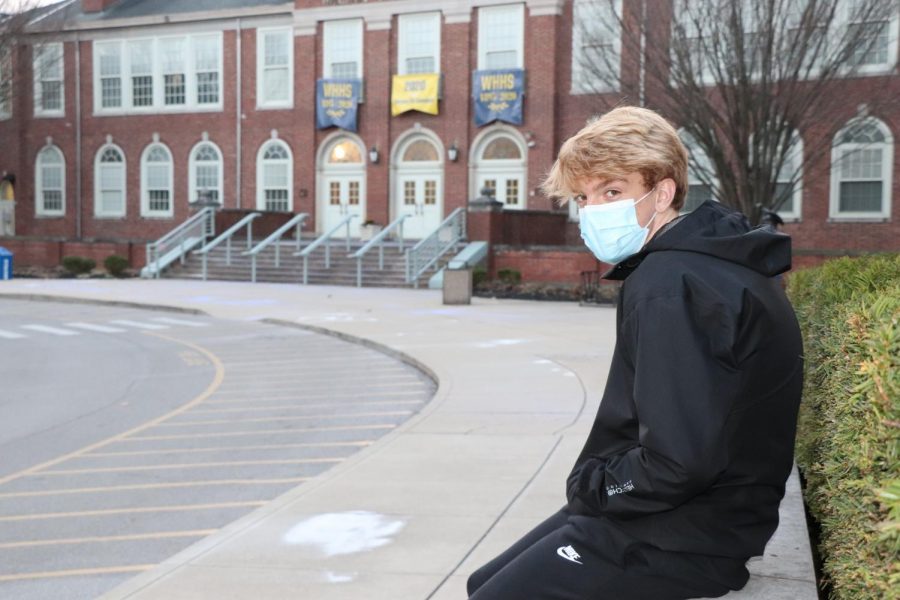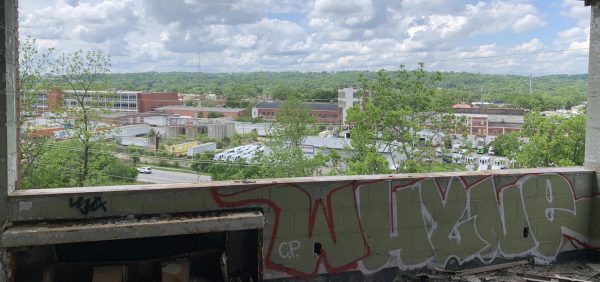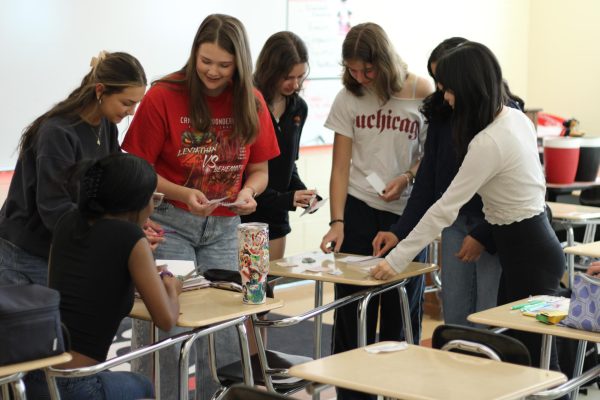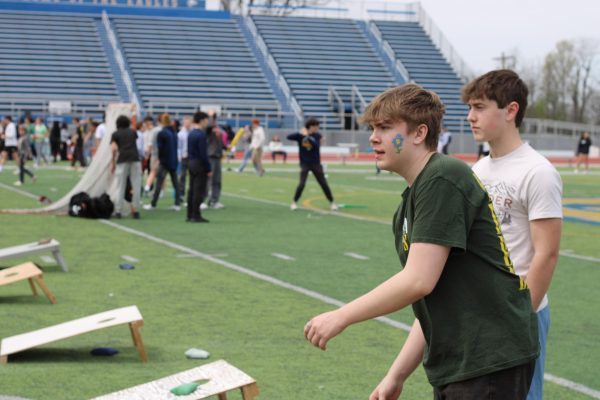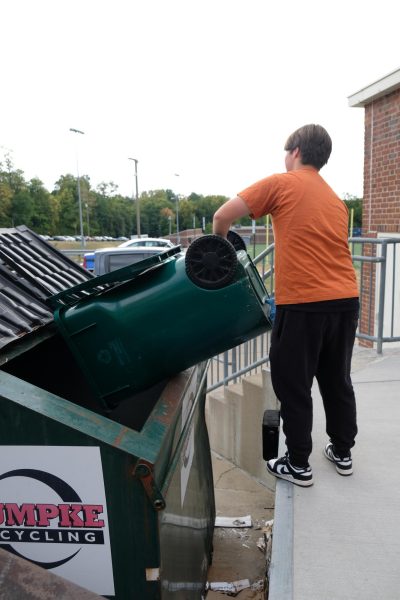Why I don’t want to return to school in person
Robert Keegan, ‘22, sits in an empty Blair Circle. Between classes, Blair Circle used to flood with students trying to get across campus for class, but since students have returned, few have taken advantage of alternative routes on campus.
On March 31, most WHHS students chose to return to campus in-person after a year of distance learning. The Chatterbox staff published two opposing views on the return to school. Read the companion piece here.
Is returning to an in-person learning environment the right decision? For me at least, the answer is no and here’s why.
As stated on the Center for Disease Control and Prevention (CDC) website on March 19, “Physical distancing recommendations to reflect at least three feet between students in classrooms.”
It’s no secret that WHHS is overpopulated with roughly 2,800 students enrolled, and maintaining the CDC approved three feet is near impossible. This is the biggest reason I am advocating for staying virtual for the remainder of the school year.
In late January Ohio Gov. Mike DeWine made it a priority to get teachers and staff members vaccinated at schools that agreed to let students return in person by March 1, WHHS being one of those schools.
However, WHHS pulled back and on Feb. 8 made the decision to remain virtual for the time being. This frustrated DeWine and as a result, he called out WHHS stating, “That simply is not acceptable… This is really about our children, and it’s about what we’ve learned in the last year. And what we’ve learned is kids can be safe in school and are safe in school.”
When asked about the size constraints in an interview with WLWT, he replied, “They signed the document. They signed saying they would go back in. If we were going to have that discussion, that discussion should have taken place at that time.”
But WHHS stayed virtual for a reason. The return to school plan was not safe as there is not enough open space to properly social distance.
DeWine talked with CPS Superintendent Laura Mitchell and said that she did tell him there was a concern about space at WHHS. He later said, “I don’t know all of the facts about Walnut Hills. I know she told me it’s a crowded situation and kids are enclosed. But I would hope that they would have tried to work that out.”
Though signing a formal document committing to an in-person return can be viewed as “premature,” it was the health of the students that was taken into consideration, causing the contractual commitment to be terminated.
Cincinnati Public Schools Board of Education has gone back and forth over the last months on whether or not it is safe for students to return. On March 10, the CPS school board approved a new plan for all schools to return in-person five days a week beginning after spring break.
There was quite a bit of controversy with this decision as WHHS is not able to maintain the three feet of distance recommended by the CDC in all classrooms, and especially not in the famously overcrowded hallways.
While there is a pandemic safety plan set in place by Future of Schools committees (FoS), including staggered arrival/departure times, temperature checks and minimal student transitioning within the building, it requires heavy enforcement due to the large student body.
In 2018, metal detectors were placed throughout the school with the intention of making the school safer. Students line up outside and one-by-one place their things on a table and walk through while a security guard checks their bags.
Only certain entrances with metal detectors were to be unlocked and students may only enter through these specific doors. This was heavily enforced, and yet within just a year, students seemed to see it as more of a suggestion, rather than a mandatory rule.
Students started letting their friends in through side entrances and security guards stopped checking every bag. These rules were being ignored completely as they would simply walk past the metal detectors, rather than through them.
How long will it be before the same thing happens with the COVID-19 guidelines? The school’s intention is to keep students safe, but how safe can they be if this pattern continues?
It’s not just physical health. The mental strain this school year has had on students continuously proves to be nothing short of deplorable. Many are just now settling into a routine and the disruption of this readjustment into in-person learning is only going to set them back.
It has been a full year since any WHHS student has had a “normal” school day, and as academically competitive a school as WHHS is, the concern for grades has never been higher. Every class that I have had this year has been completely open-note and with only a few weeks left in the year, it seems the decision to return is the antithesis of a good idea.
This is not to say that next year my opinion won’t change. For now however, I cannot say that I feel comfortable enough to be in close proximity with so many people, or that I feel confident enough in the level of information I have retained in each class to believe that returning in-person this school year is the right decision for me.
All views shared in the Opinions section of The Chatterbox belong to their respective authors, and may not represent the views of the publication as a whole.
Your donation will support the student journalists of Walnut Hills High School. Your contribution will allow us to purchase equipment, cover our annual website hosting, printing costs and offset competition and conferences fees for students.



